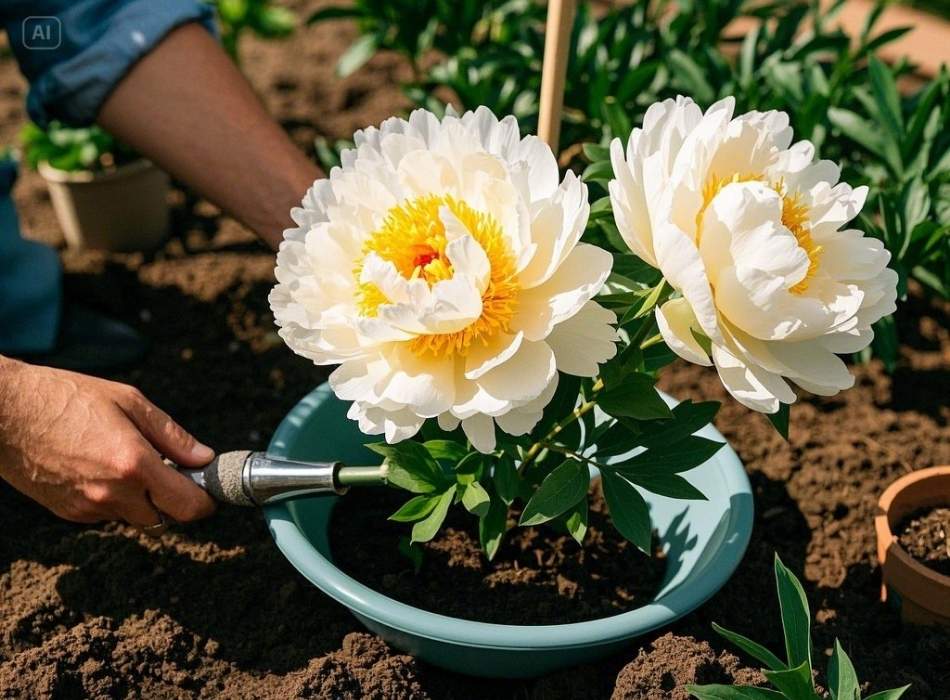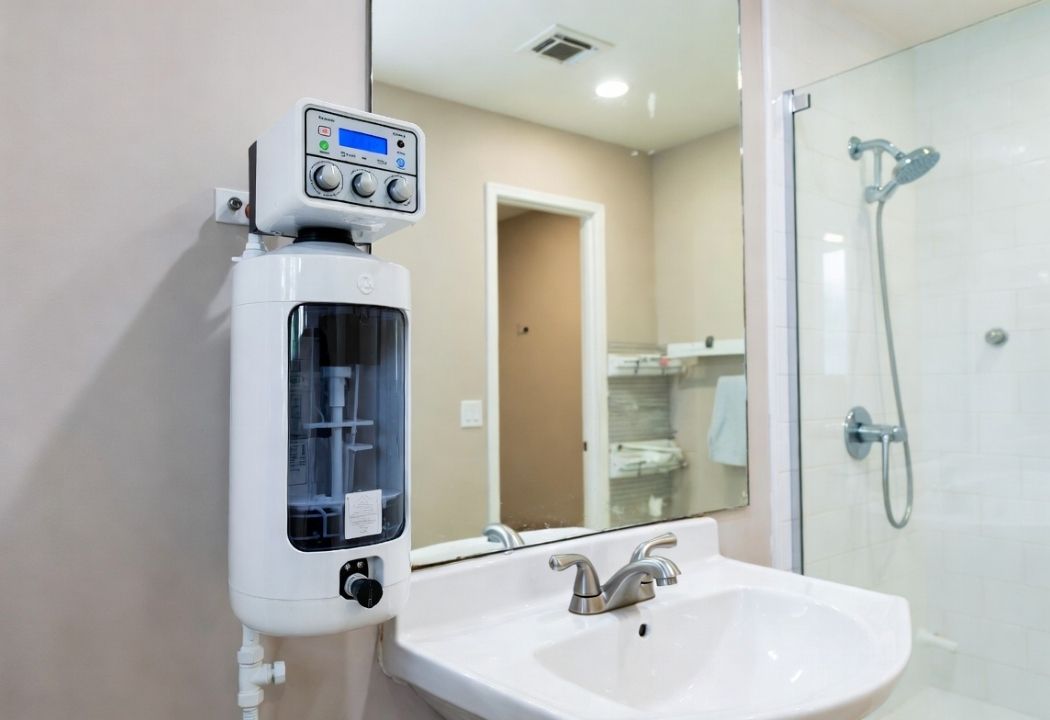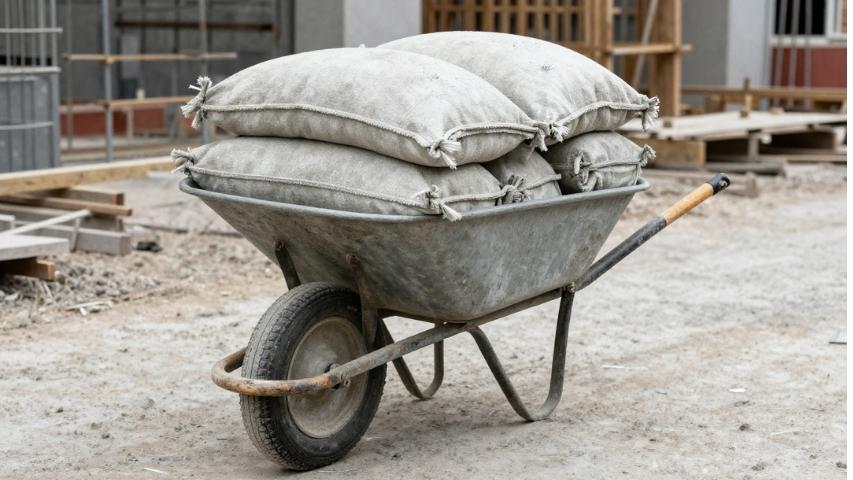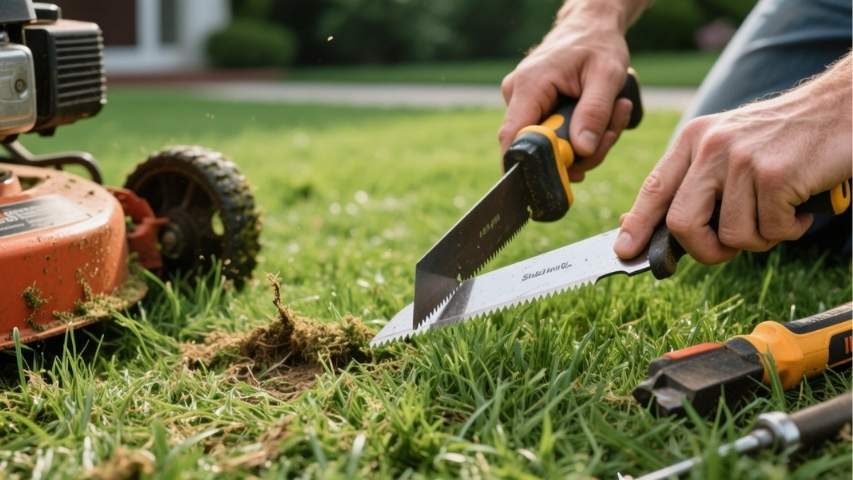Peonies are often celebrated as the queens of the garden, thanks to their lush blooms, intoxicating fragrance, and timeless elegance. While peonies are typically synonymous with cooler climates, many gardeners in Scottsdale, Arizona, wonder if these beauties can survive and thrive in the desert’s unique conditions. Enter the Bowl of Cream peony, a creamy-white variety adored by flower enthusiasts worldwide. Despite Scottsdale’s arid climate and scorching heat, with the proper techniques and care, you can successfully grow these show-stopping flowers in your Arizona garden.
This guide will share everything you need to know about growing Bowl of Cream peonies in Scottsdale. From preparing your Soil to providing proper care, we’ll ensure your desert garden is ready to welcome these floral gems.
Understanding Bowl of Cream Peonies
What Makes Bowl of Cream Peonies Special?
Bowl of Cream peonies are a prized herbaceous peony variety known for their large, creamy-white, double-petaled blooms. Their flowers measure 8 to 10 inches across, making them some of the most striking peonies available. These peonies bloom in late spring and can act as a statement piece in any garden.
Beyond their breathtaking appearance, Bowl of Cream peonies are relatively hardy, given the right environment. However, their preference for cooler climates can make growing them in a place like Scottsdale a unique challenge—but not an impossible one.
Can Peonies Grow in Scottsdale, AZ?
Yes, peonies can grow in Scottsdale, but they require a bit more effort compared to other regions. Peonies, especially Bowl of Cream varieties, thrive in USDA hardiness zones 2–8, but Scottsdale falls under zones 9–10. To overcome this challenge, you’ll need to follow specific growing practices tailored to the desert climate.
How to Grow Bowl of Cream Peonies in Scottsdale
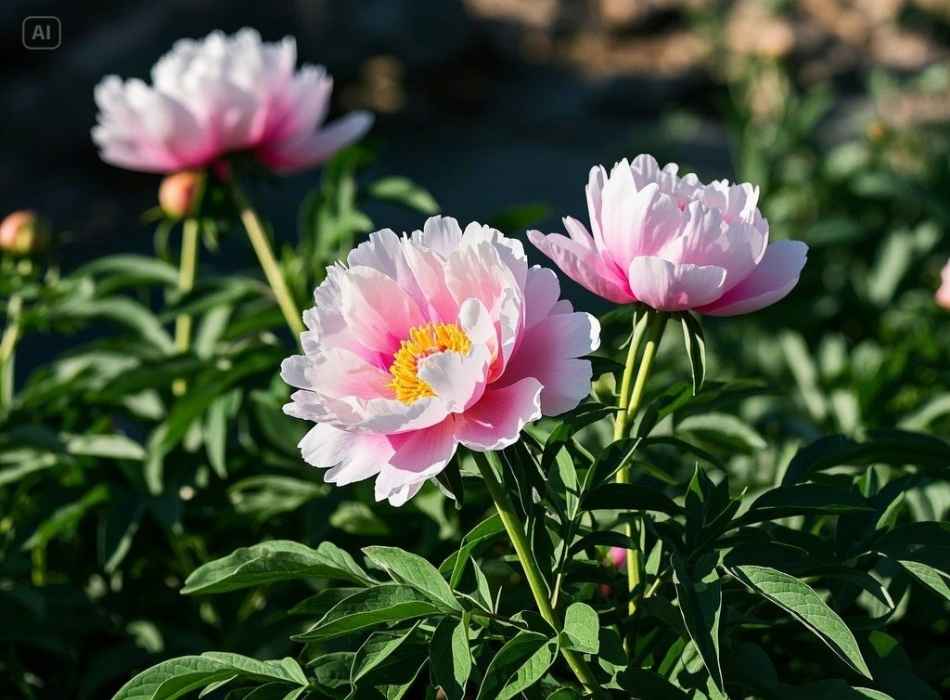
Step 1: Choose the Right Location
Peonies typically require cooler Soil and plenty of sunlight—but in Scottsdale, you need to strike a balance between sunlight and protection from the intense afternoon heat.
- Morning Sun, Afternoon Shade: Plant your Bowl of Cream peonies in a spot that receives 4–6 hours of the morning sun but is sheltered during the hot afternoons. This will prevent the plants from overheating and drying out.
- Good Air Circulation: Avoid planting peonies too close to walls or other heat-retaining surfaces. Adequate air circulation will help keep the plants cooler.
Step 2: Prepare the Soil
Peonies need rich, well-draining Soil to thrive. Scottsdale’s native Soil tends to be sandy and alkaline, which isn’t ideal for peonies. Here’s how to amend it:
- Add Organic Matter: Mix compost, aged manure, or peat moss into the Soil to improve its fertility and moisture retention.
- Test Soil pH: Peonies prefer a pH range of 6.0–7.0. Test your Soil and, if necessary, add sulfur to lower the pH or lime to raise it.
- Ensure Drainage: Avoid heavy clay soils or standing water, as soggy roots will quickly cause rot.
Step 3: Choose the Right Peony Roots
When growing peonies in Scottsdale, it’s crucial to select healthy, disease-free, bare-root Bowl of Cream peonies from a reputable supplier.
- Ensure the rootstock has at least 3–5 healthy “eyes” (growth buds) on it.
- Opt for varieties labelled as heat-tolerant or explicitly hybridized for warmer climates.
Step 4: Planting Peonies in the Desert

Timing and technique are everything when planting peonies in Scottsdale.
- Timing: Plant your peonies in the fall (October to early November). This gives the roots time to establish before the harsh summer temperatures arrive.
- Depth: Unlike in cooler climates, plant the peony roots no deeper than 1 inch below the soil surface. This shallow planting helps expose the roots to cooler air and soil temperatures.
- Spacing: Space plants 3–4 feet apart to improve airflow and reduce competition for nutrients.
Step 5: Water Wisely
Desert climates demand a different watering schedule than what most peonies are used to.
- Deep, Consistent Watering: Peonies need 1–2 inches of water per week. Use a soaker hose to water deeply at the base of the plant, encouraging deep root growth.
- Morning Watering: Water in the morning to reduce evaporation and prevent fungal diseases.
Step 6: Mulch to Beat the Heat
Mulching is critical for keeping the roots of your Bowl of Cream peonies fabulous in the harsh Scottsdale sun.
- Apply 2–3 inches of organic mulch, such as shredded bark or straw, around the base of the plant. This helps retain moisture while reducing soil temperature. Just make sure to keep the mulch a few inches away from the peony stems to prevent rotting.
- Apply mulch in early spring before new growth appears and again in late fall after the first frost. Reapply as needed throughout the growing season.
Step 7: Fertilize Sparingly
Bowls of Cream peonies do not require heavy fertilization, but a light application of balanced fertilizer in early spring can help promote healthy growth and blooming.
- Use a slow-release granular fertilizer or composted manure according to package instructions, being careful not to over-fertilize. Over-fertilizing can lead to weak stems and reduced flowering.
- Avoid fertilizing too late in the season, as this can also result in weaker stems and smaller flowers.
- Organic fertilizers such as compost or well-aged manure can be applied throughout the growing season to provide nutrients to the Soil without risking over-fertilization.
Fertilizing sparingly will help ensure that your Bowl of Cream peonies maintain their strong stems and beautiful blooms year after year.
Step 8: Pruning Tips
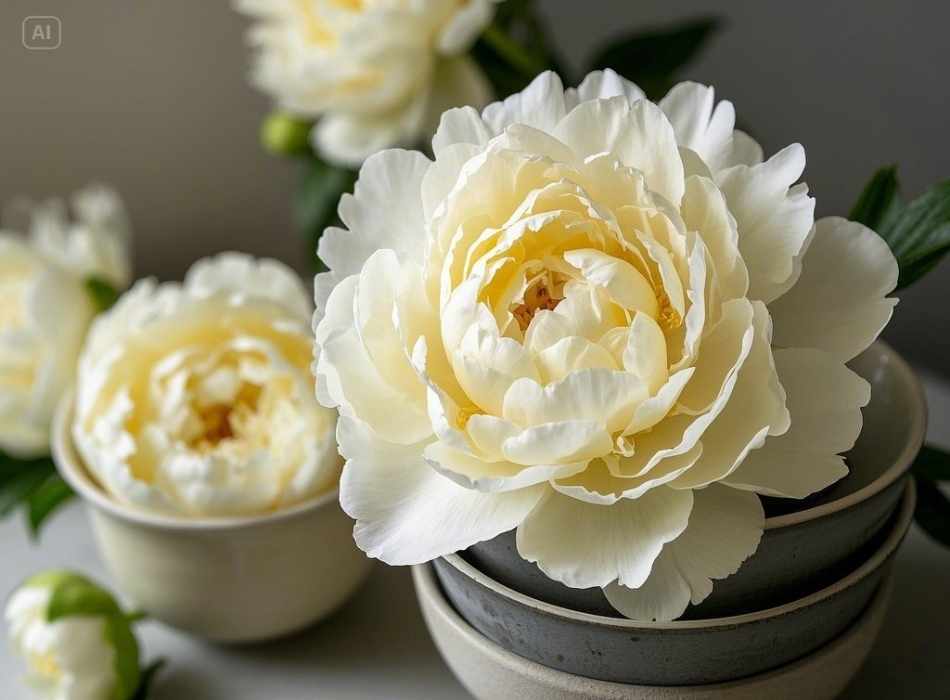
Bowls of Cream peonies do not require extensive pruning, but there are a few tips to keep in mind:
- Deadhead spent blooms by cutting them off at the base of the stem. This will encourage new growth and promote a second round of blooming.
- In the fall, cut back any dead or damaged stems to ground level. This will help prevent diseases from overwintering in the plant.
- Consider dividing your peony plant in late summer or early fall every few years. This will help rejuvenate the plant and promote better growth and blooming.
Step 9: Additional Care Tips
In addition to regular watering and fertilizing, there are a few other care tips that can help ensure your Bowl of Cream peonies thrive:
- Mulch around the plant’s base with organic material, such as compost or shredded bark. This will help retain moisture in the Soil and suppress weeds.
- Protect young plants from strong winds, as peonies have shallow roots and can easily be uprooted.
- Throughout the growing season, remove any dead or damaged foliage and flowers to maintain a clean appearance and prevent diseases.
- In colder climates, provide winter protection by adding a layer of mulch or covering the plant with burlap. This will help insulate the plant from extreme temperatures and protect it from frost heaving.
- Avoid over-fertilizing, as this can lead to weak stems and floppy flowers. Follow the recommended dosage for your specific fertilizer.
- Look for common pests, such as aphids, spider mites, and nematodes. These can be treated with insecticidal soap or other natural remedies.
- Regularly deadhead spent blooms to encourage continuous blooming and keep the plant looking tidy.
- Different types of perennials have different pruning needs. Some may benefit from being cut back in the fall, while others should be pruned in the spring. Research your specific plants to determine the best time for pruning.
- Divide overcrowded perennials every few years to promote healthy growth and prevent them from becoming too large and unmanageable.
- Consider companion planting with perennials that have similar growing conditions and complement each other visually. This can help improve overall plant health and create a beautiful garden display.
These are just some general tips for maintaining your perennial garden. By staying informed about your plants’ specific needs and regularly tending to them, you can enjoy a vibrant and ever-changing garden year after year.
Additional Tips for Perennial Garden Maintenance

- Deadhead spent flowers throughout the growing season to encourage continuous blooming.
- Monitor for pests and diseases and take appropriate action when necessary.
- Regularly weed your perennial garden to prevent competition for nutrients and water.
- Consider adding mulch around your perennials to help retain moisture in the Soil and deter weed growth.
- Keep an eye on soil pH levels and amend as needed to ensure optimal growing conditions for your plants.
- Don’t be afraid to experiment with different plant combinations and arrangements within your perennial garden.
- Remember to regularly deadhead spent flowers to promote new growth and prevent self-seeding.
- In the fall, cut back any dead foliage or stems and clean up debris to prepare for winter.
- Consider dividing overgrown perennials in the fall or early spring to maintain healthy plant growth.
- Don’t forget to plan for seasonal interest by choosing perennials with varying bloom times, textures, and colours.
- Finally, don’t be afraid to seek advice from local nurseries or experienced gardeners for personalized tips and recommendations for your specific growing conditions.
Perennial gardening can be a rewarding experience that brings beauty, colour, and life into your outdoor space.
Caring for Your Bowl of Cream Peonies
Fertilizing for Healthy Growth
Peonies are light feeders but will appreciate a little extra nourishment as they grow.
- Apply a balanced, slow-release fertilizer (10-10-10) in early spring and again after the blooming period.
- Avoid over-fertilizing, as it can lead to excessive foliage growth and fewer blooms.
Protecting from Pests and Diseases
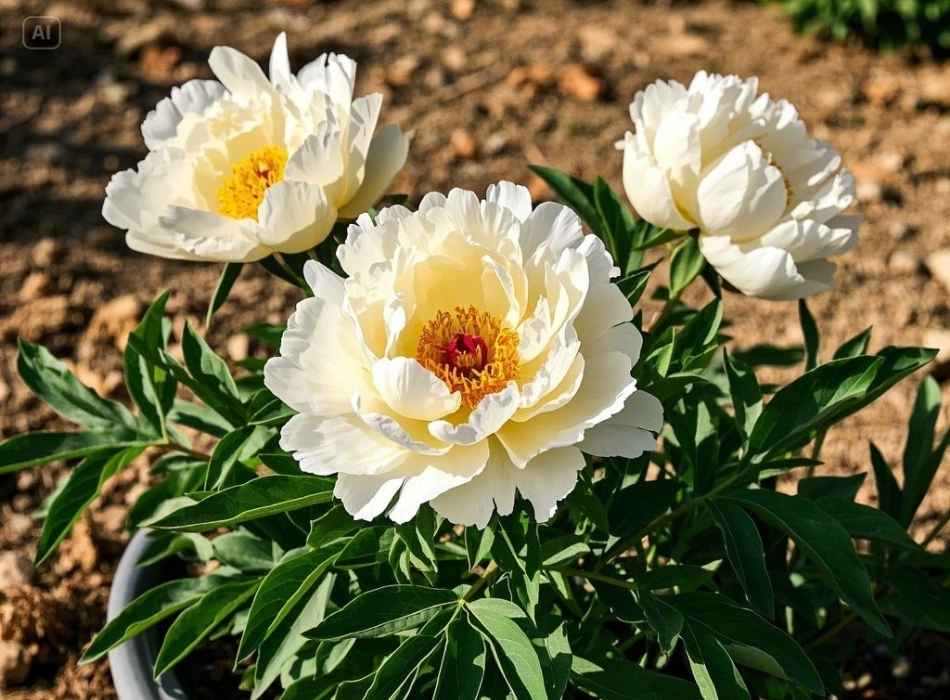
While Bowl of Cream peonies are generally resistant to pests and diseases, Scottsdale’s environment presents some challenges.
- Aphids: These tiny insects may target peonies. Remove them with a strong spray of water or insecticidal soap.
- Powdery Mildew: Ensure good airflow and avoid wetting the leaves during watering to prevent mildew.
Deadheading and Pruning
After blooming, you can deadhead the spent flowers to maintain the plant’s appearance. In late fall, cut back the foliage to the ground to prepare the plant for dormancy.
How to Handle Scottsdale Summers
Scottsdale’s summers can be brutal, but with proper care, your Bowl of Cream peonies can survive.
- Provide Shade: While the plants will become semi-dormant during the scorching summer months, provide temporary shade with shade cloths to reduce stress.
- Keep Soil Moist: Check the soil moisture regularly and adjust your watering schedule as needed.
Why Grow Bowl of Cream Peonies in Scottsdale?
Despite the extra effort required, growing Bowl of Cream peonies in Scottsdale is worth it. Their creamy blooms are nothing short of stunning, offering elegance that few other flowers can match. Plus, successfully growing these plants in a desert climate makes for an impressive (and Instagram-worthy) gardening triumph!
Bring Your Dream Garden to Life
By understanding and meeting their unique needs, you can transform Scottsdale’s unforgiving desert conditions into a haven for Bowl of Cream peonies. With careful attention to location, soil preparation, and consistent care, these gorgeous blooms can thrive in your garden, adding beauty and sophistication to your outdoor space.
Frequently Asked Questions
1. Can Bowl of Cream peonies really thrive in Scottsdale’s desert climate?
Yes, while Bowl of Cream peonies are not typically suited for desert environments, they can successfully grow in Scottsdale with the right preparation. By providing proper shade, amending the Soil, and maintaining consistent watering, these plants can adapt and flourish.
2. How much water do Bowl of Cream peonies need in the desert?
It’s essential to strike a balance. These peonies require well-draining Soil and consistent moisture, but overwatering should be avoided to prevent root rot. A regular watering routine, adjusted for seasonal needs, is essential.
3. When is the best time to plant Bowl of Cream peonies in Scottsdale?
Fall is the ideal time to plant peonies in desert climates. Cooler temperatures encourage root establishment before the intense summer heat sets in.
4. Do Bowl of Cream peonies require fertilization?
Yes, fertilizing is beneficial for these plants. Use a balanced fertilizer in early spring and again after flowering to promote healthy growth and blooms.
5. Can I grow Bowl of Cream peonies in pots rather than in the ground?
Absolutely! Growing peonies in containers can be a great option, especially in the desert. Ensure the pots have adequate drainage, use high-quality Soil, and be mindful of positioning them in locations with partial shade to combat the harsh sun.
Additional Tips for Growing Bowl of Cream Peonies
- While Bowl of Cream peonies can survive in partial shade, they will bloom best in full sun.
- Consider adding mulch around the base of the plant to help retain moisture and suppress weeds.
- Remove damaged or dead leaves from the plant throughout the growing season to encourage healthier growth and prevent disease.
- In colder climates, it is advisable to protect the plants during winter by covering them with a layer of straw or other insulating material.
- If you plan on cutting blooms for indoor arrangements, do so in the early morning when they are fully hydrated.
- When planting peonies, give them enough space, as overcrowding can hinder their growth and flowering.
- Consider dividing mature plants every 3-5 years to promote new growth and maintain plant health.
- Avoid over-watering peonies, as this can cause root rot. Instead, water deeply once a week or when the top inch of Soil feels dry.
- For taller varieties, consider staking the stems to prevent them from bending or breaking under the weight of their large blooms.
- Peony flowers make excellent cut flowers and can last for up to a week in a vase if adequately cared for. Cut the stems at an angle and remove any leaves that will be submerged in water to prevent bacterial growth.
- Peonies are generally pest-resistant, but they can occasionally suffer from fungal diseases such as botrytis blight. Remove and dispose of any infected leaves or flowers to prevent the spread of disease.
- In colder climates, properly mulching peony plants in the fall is essential to protect them from harsh winter conditions. Use a 2-3 inch layer of mulch around the base of the plant, being careful not to cover the crown.
- As peonies age, their blooms may become smaller and less abundant. To prevent this, consider removing old blooms after they have
Conclusion
Bowl of Cream peonies are a stunning addition to any garden, offering elegant blooms and a touch of grace to outdoor spaces. With proper care, such as watering, fertilizing, and ensuring the right planting conditions, these plants can thrive even in challenging environments like the desert. Whether planted in the ground or pots, they are sure to provide years of beauty and joy with their timeless charm. So, why add a touch of sophistication to your garden with these lovely peonies?







